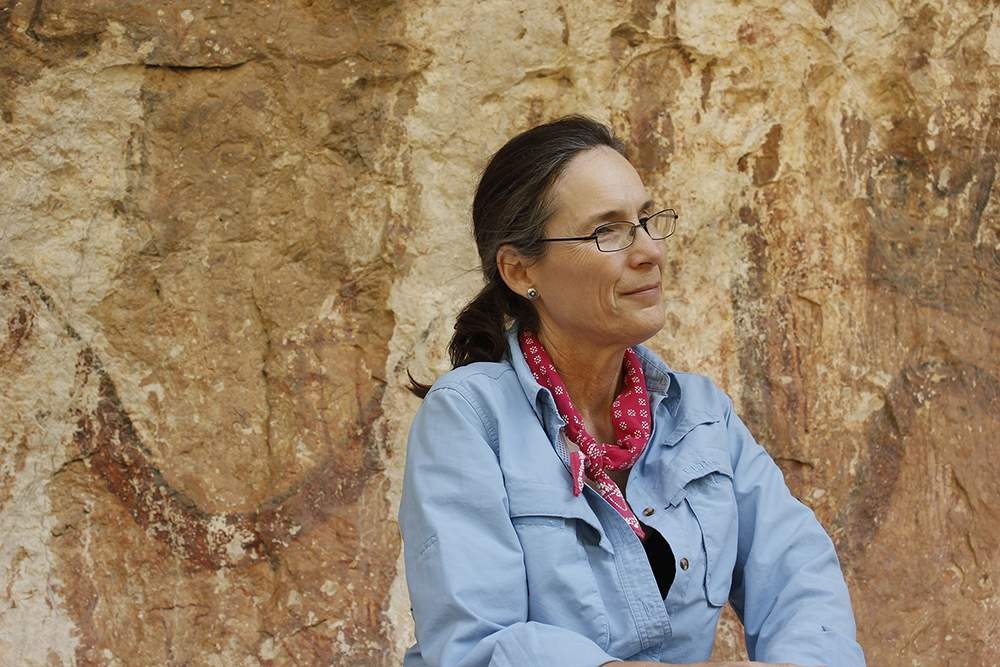Past Events
Interested in Cotsen events? Sign up for our mailing list.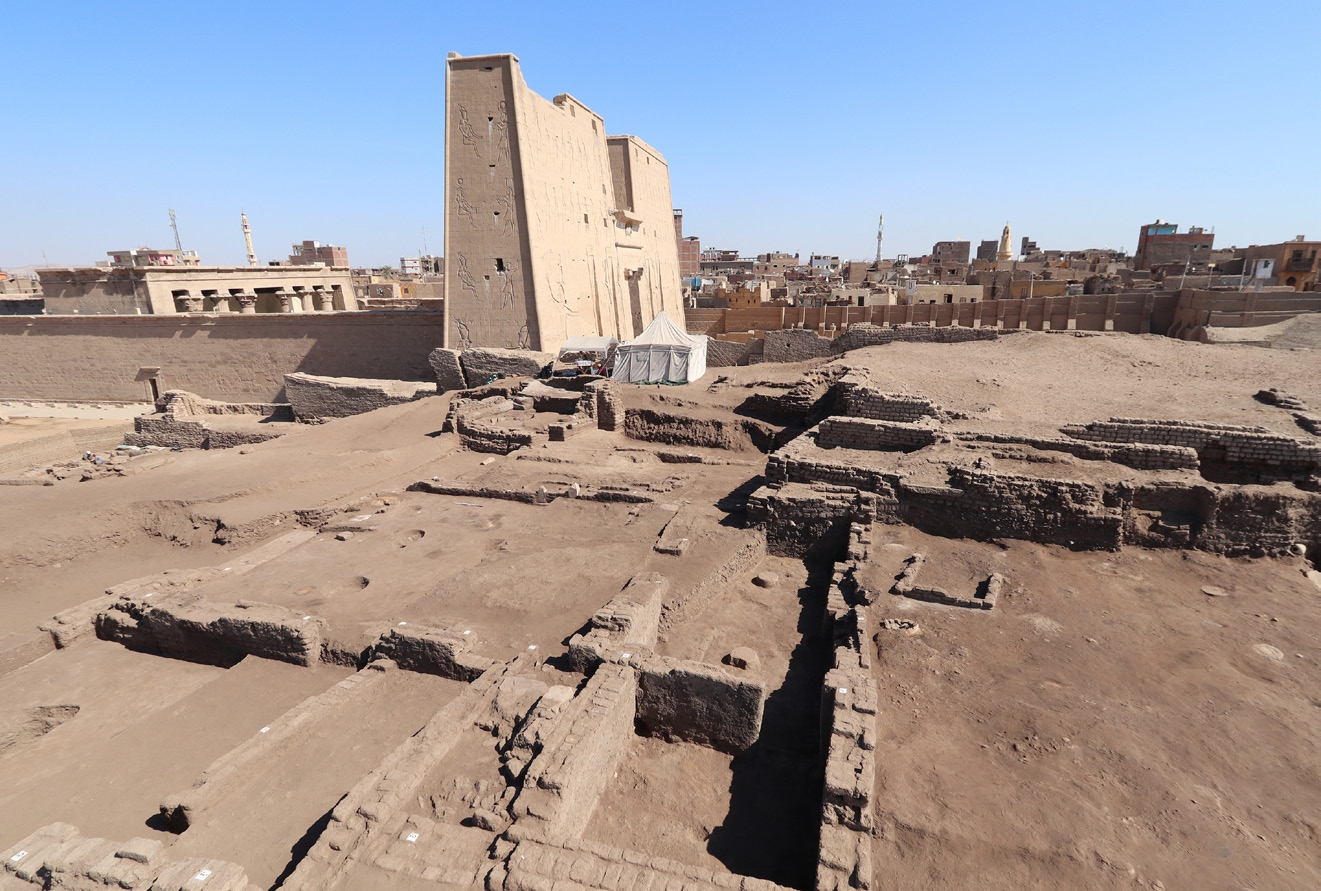
Nadine Moeller
Associate Professor of Egyptian Archaeology
University of Chicago
Abstract:
The ongoing excavations by the Oriental Institute team directed by Nadine Moeller and Gregory Marouard have during the most recent seasons focused on settlement remains dating to the Old Kingdom. Located 20 m to the west of the much later Ptolemaic temple of Horus of Edfu, excavations revealed several phases of domestic installations from the second part of the 6th Dynasty that covered an older administrative complex with several massive mudbrick structures dating to the late 5th Dynasty that had been installed directly onto the natural Nile sand deposits in an area never settled before that date. Based on their size, architectural details and related finds, the two large buildings are of official nature and constitute a newly founded settlement quarter in the ancient town of Behdet (Edfu). Among the finds are more than 220 clay sealings naming king Djedkare-Isesi (late 5th Dynasty, ca. 2434 BC), in addition to official titles that regularly mention a group of specialized workers involved in prospection and mining activities, the so-called sementiu. Additional finds such as numerous pieces of copper ore, important traces of metallurgical activities, Red Sea shells and a significant amount of Nubian ceramics found on the floor levels during the excavation further confirm the link to royal expeditions and mining activities in the Eastern desert areas.
The second area that has been the focus of fieldwork since November 2018 provided new evidence for a vast domestic quarter dating to the beginning of 18th Dynasty. Excavations have focused on a large urban villa of about 400 square-meters, which dates from the early Thutmoside period (ca. 1500-1450 BCE). This building is characterized by several rooms with columns. The largest and main room, a 6-columned hall, contained in one of its corners a well-preserved domestic sanctuary dedicated to the cult of the family ancestors. Numerous elements attesting to the cult activity have been found near a small fire place and offering table, including a very rare example of an ancestor bust and a statuette of a seated scribe
Contact Sumiji Takahashi
Email sutakahashi@ioa.ucla.edu
Phone 310-825-4169
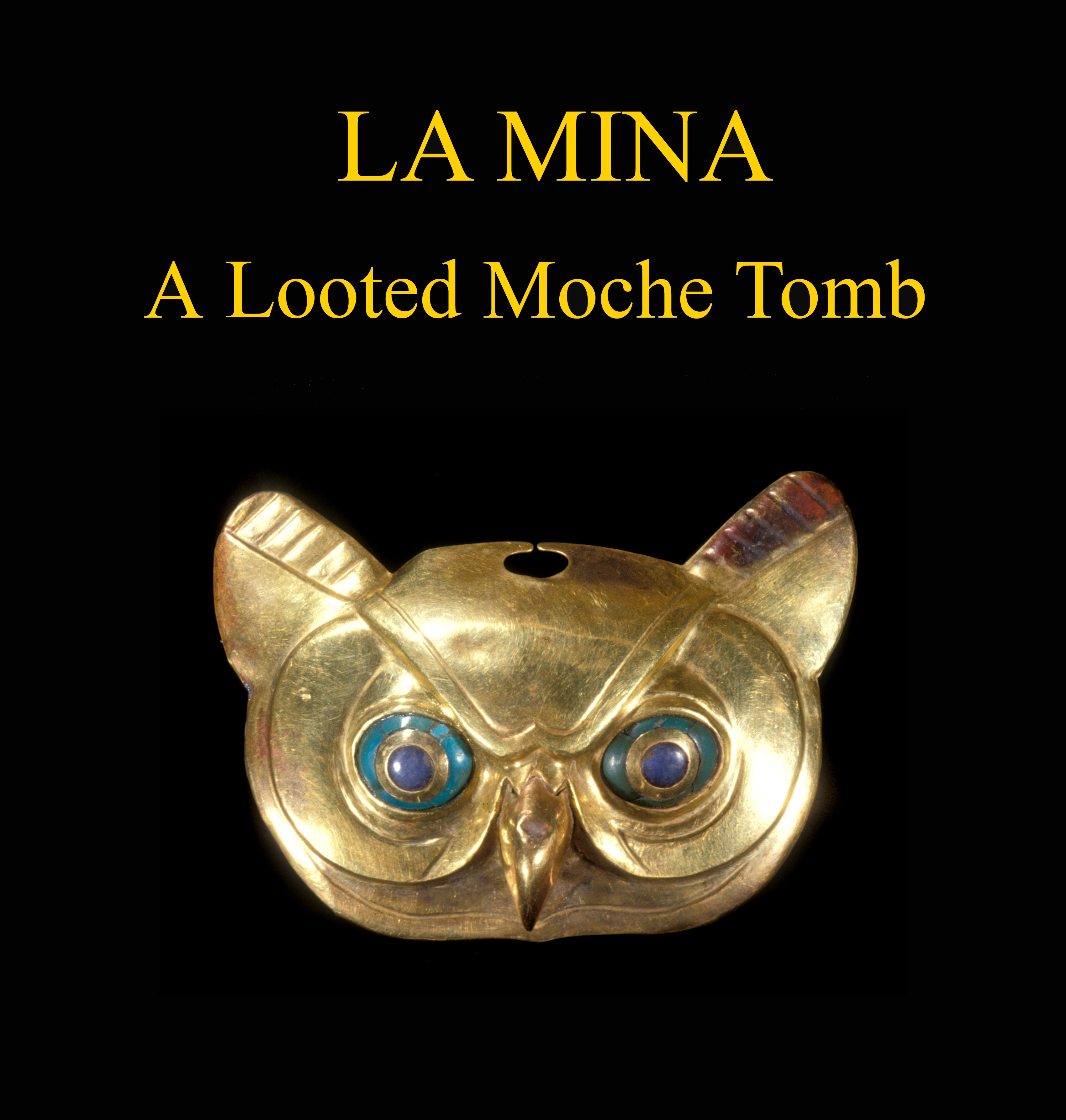
Christopher Donnan, Ph.D.
UCLA Professor Emeritus
Abstract:
This talk focuses on an extraordinarily rich Moche tomb that was looted on the north coast of Peru, the efforts that were made to record the objects that came from it, and how it was possible to learn about its location, construction, and embellishment.
Contact
Email sutakahashi@ioa.ucla.edu
Phone 310-825-4169
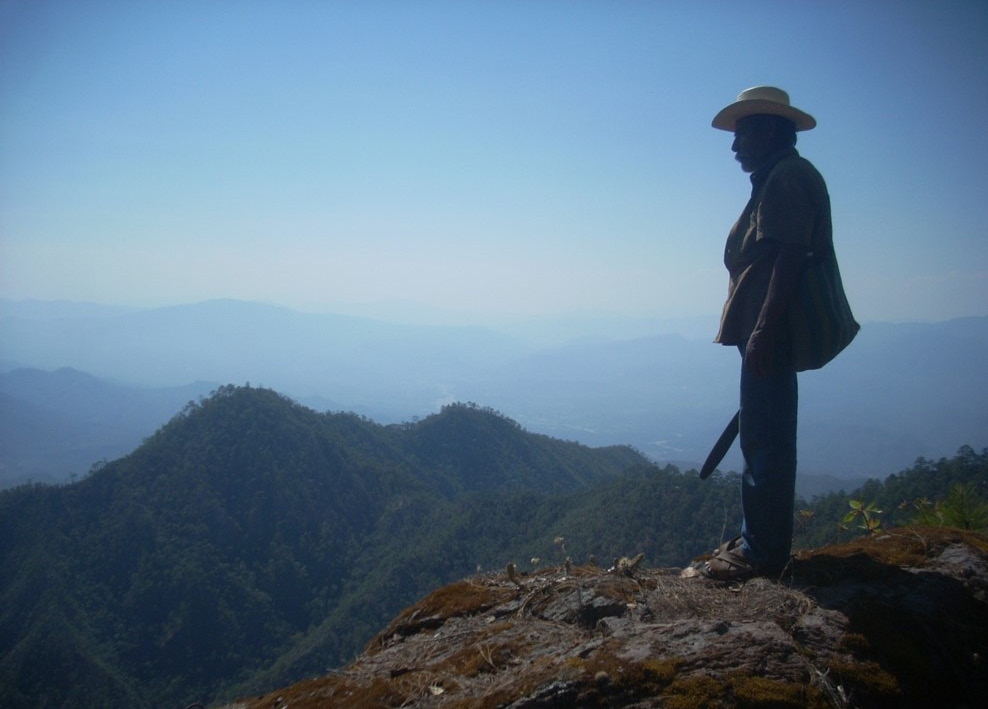
Dr. Stacie King
Associate Professor of Anthropology
Associate Faculty for the Center for
Latin American and Caribbean Studies
Indiana University Bloomington
Abstract:
This talk explores the challenges that ethnonyms create when trying to reconstruct
histories of multiethnic landscapes in the ancient world. My larger project in the Nejapa
region of Oaxaca, Mexico addresses various aspects of conquest and colonialism along
interegional trade routes, including identifying fortresses in mountain landscapes, the
meaning of unoccupied land, the relationships entailed by trade and exchange, and
reconciling archival documents, oral history, and archaeology. In this talk, I use my work
to demonstrate how ethnonyms have pervaded interpretations of the past, archaeological
reconstructions, and Colonial period registers, such that it remains difficult to envision a
different kind of thriving, multiethnic world. Taken together, archaeological data, archival
information, and oral history from rural multiethnic Nejapa, Oaxaca show us that
different indigenous communities across this landscape experienced Aztec, Zapotec, and
Spanish conquests and colonialisms differently between the years A.D. 1350 and 1650, and
that these differences do not fit well with traditional reconstructions of Nejapa’s
indigenous ethnic groups (Mixe, Chontal, and Zapotec). Instead, the data complicate
entrenched notions of ethnicity and challenge their basic formulation. The long-standing
multiethnic past of ancient Nejapa set the stage for a different form of indigeneity that
Nejapa’s resident experience in the present.
Contact Sumiji Takahashi
Email sutakahashi@ioa.ucla.edu
Phone 310-825-4169
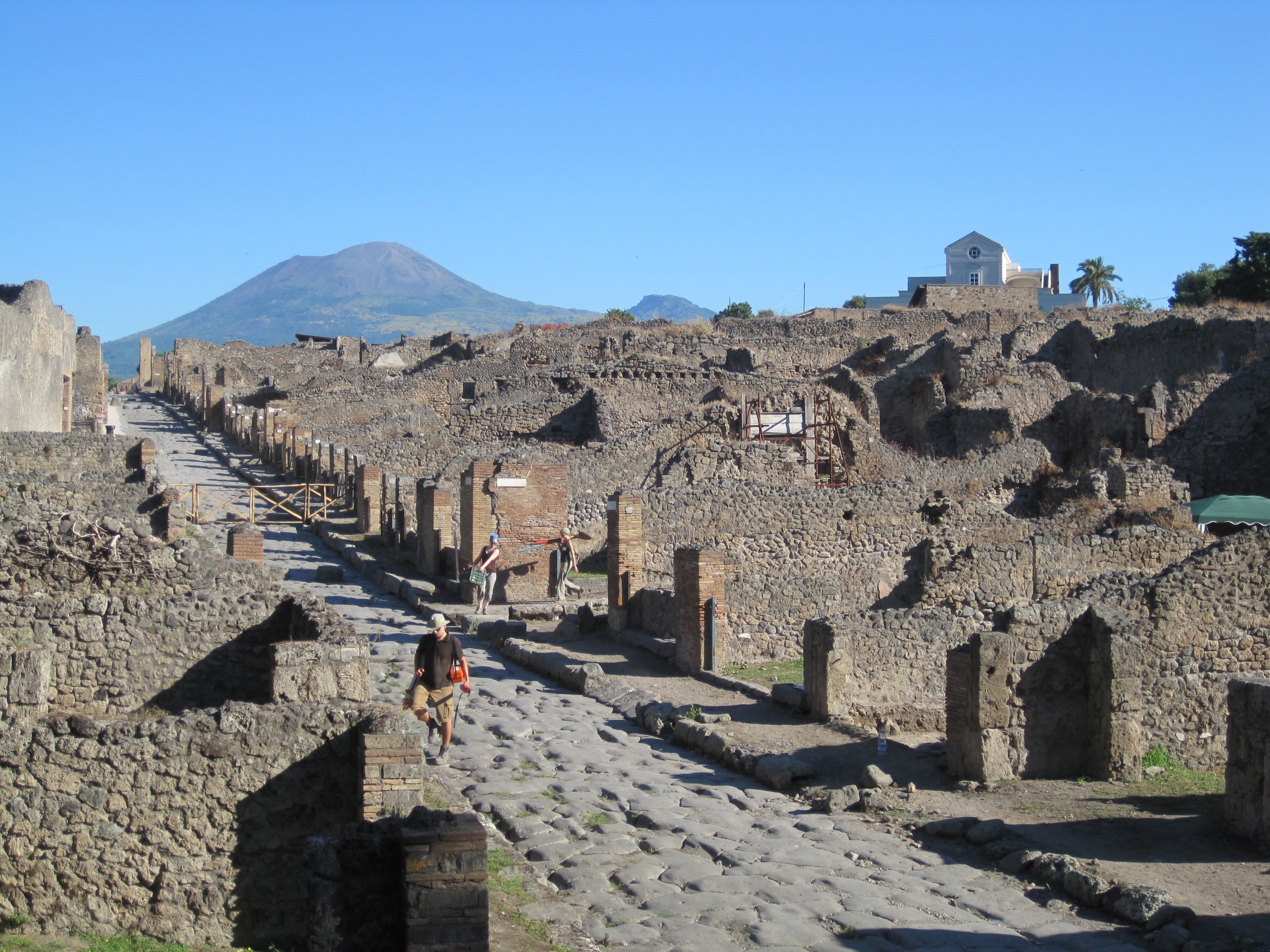 Dr. Leigh Lieberman
Dr. Leigh Lieberman
Department of History
Claremont McKenna College
Abstract
In recent years, the study of ancient artifacts has moved beyond straightforward typologies, descriptions, and quantifications. New approaches to the analysis of material culture - including methods of geospatial referencing, artifact agency, object biography, and statistical analysis of large datasets - have drawn attention to the myriad ways in which objects could be used and reused, deposited and redeposited in the ancient world. These new approaches have consequently given new life to materials that have been long overlooked in busy storerooms, from iron nails to loom weights, from ceramic wasters to unidentifiable coins. However, no matter the classification method, scholars still by and large fail to situate all the artifacts from a site fully within their archaeological contexts, a term that is frequently discussed in published reports but often thoroughly misunderstood. In both excavation publications and museum displays, the intended use of an object is almost always prioritized when in fact a contextual approach to the study and presentation of artifacts and assemblages can better illustrate the multiple, varied roles that objects served in the ancient world.
As the Manager of Data and Information Resources for the University of Cincinnati's Pompeii Archaeological Research Project: Porta Stabia (PARP:PS), the Data Supervisor for the American Excavations at Morgantina: Contrada Agnese Project (AEM:CAP), and the Head of Materials for the University of Cincinnati’s Tharros Archaeological Research Project (TARP), I have facilitated the development of a robust data organizational scheme that guides our innovative approach to material culture. I argue that by prioritizing context in the analysis of artifacts and assemblages, we can come to a more nuanced interpretation of how everyday objects were used, discarded, and recycled in urban spaces in antiquity. In my presentation, I’ll be highlighting some of the important lessons that I have learned along the way.
Contact
Email sutakahashi@ioa.ucla.edu
Phone 310-825-4169
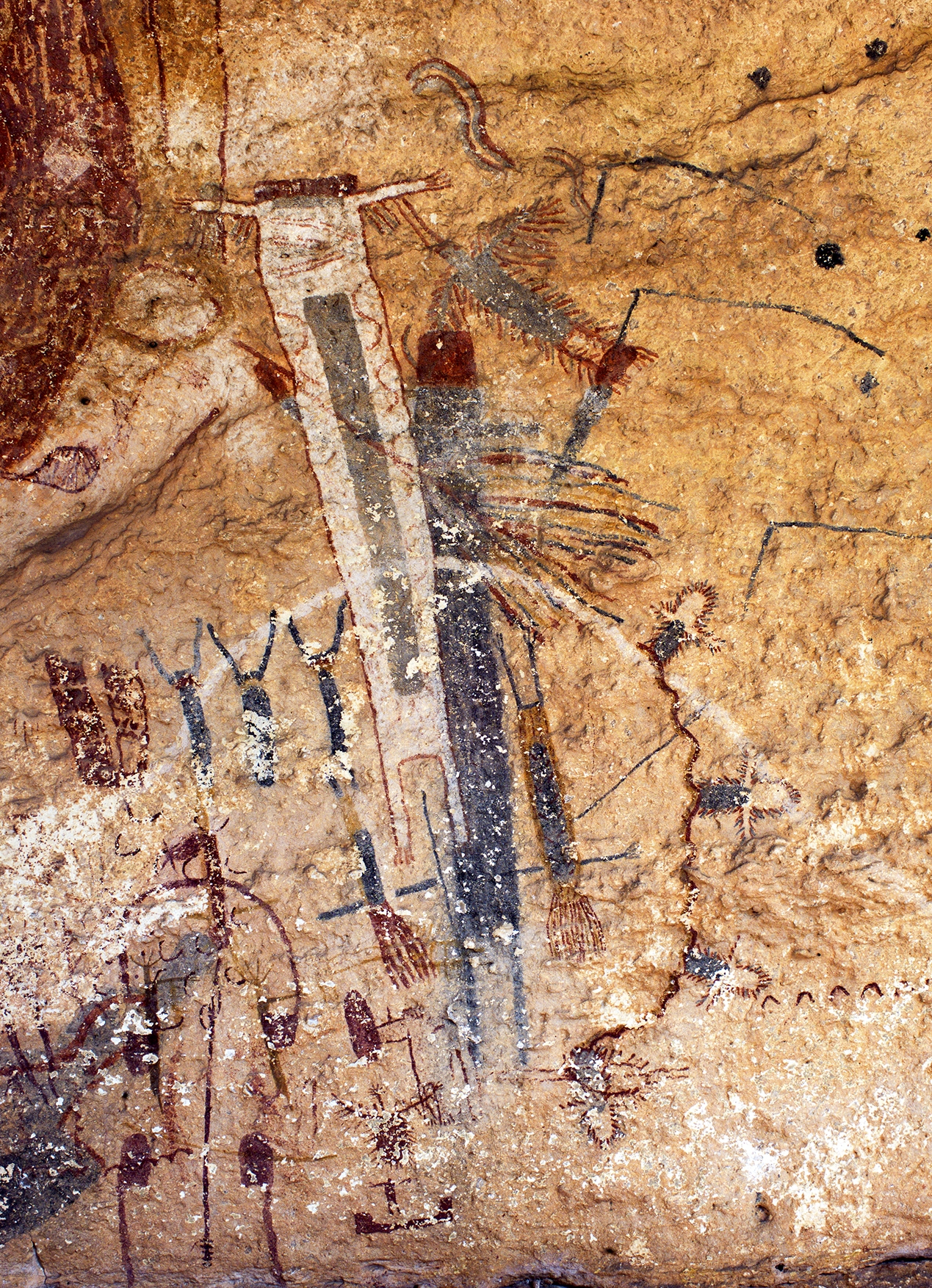 The Lower Pecos Canyonlands of southwest Texas and Coahuila, Mexico house some of the most spectacularly complex rock art of the ancient world. Approximately 4000 years ago, hunter-gatherers began transforming this region into a painted landscape. Perhaps the greatest of these masterpieces is the White Shaman mural, an intricate Pecos River style painting that spans twenty-six feet in length and thirteen feet in height. Drawing on twenty-five years of archaeological research, as well as insight from ethnohistory and art history, Carolyn Boyd identifies patterns in the art that relate, in stunning detail, to the mythologies of Uto-Aztecan speaking peoples, including the Aztec and the contemporary Huichol. Analysis of these patterns led to the identification of the White Shaman mural as an ancient visual narrative relating a story of the birth of the sun and the beginning of time.
The Lower Pecos Canyonlands of southwest Texas and Coahuila, Mexico house some of the most spectacularly complex rock art of the ancient world. Approximately 4000 years ago, hunter-gatherers began transforming this region into a painted landscape. Perhaps the greatest of these masterpieces is the White Shaman mural, an intricate Pecos River style painting that spans twenty-six feet in length and thirteen feet in height. Drawing on twenty-five years of archaeological research, as well as insight from ethnohistory and art history, Carolyn Boyd identifies patterns in the art that relate, in stunning detail, to the mythologies of Uto-Aztecan speaking peoples, including the Aztec and the contemporary Huichol. Analysis of these patterns led to the identification of the White Shaman mural as an ancient visual narrative relating a story of the birth of the sun and the beginning of time.
California NanoSystems Institute at UCLA
570 Westwood Plaza Building 114
Los Angeles, CA 90095
Reception on Tuesday, February 12, 2019 at 6:00pm with the program at 7:00pm
Carolyn E. Boyd, Ph.D.
Founder of Shumla Archaeological Research & Education Center
Research Professor at Texas State
Contact Michelle Jacobson
Email mjacobson@ioa.ucla.edu
Phone
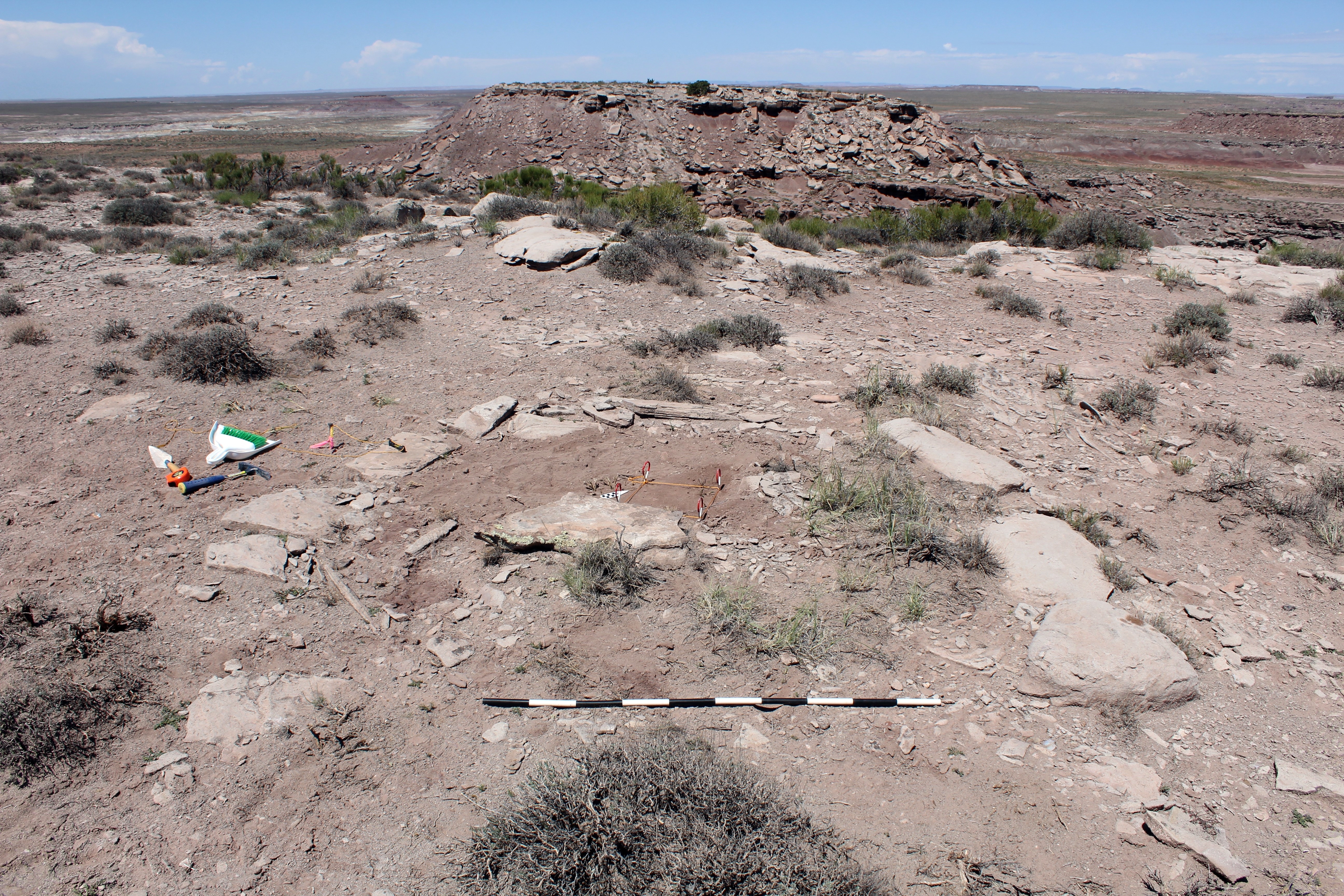
Gregson Schachner & Reuven Sinensky
Abstract:
Ancestral Pueblo communities in the American Southwest underwent dramatic transformations in the mid-1st millennium AD, including rapid population growth and the widespread adoption of social structures that remained in place over the next millennium. We explore to two key moments in this process: the widespread adoption of sedentary agriculture in the mid-6th century and the founding of the earliest aggregated villages during the 8th century. While the former transition is marked by abrupt changes in architecture, storage facilities, and technological traditions region-wide, the latter displays remarkable diversity. Drawing on recent excavations and high quality chronometric and paleoclimate data, we suggest that a severe climatic downturn brought about by a series of massive volcanic eruptions is in part responsible for the abrupt changes associated with the onset of the Neolithic Demographic Transition in the northern Southwest during the mid-AD 500s, while a myriad of entangled economic and social factors contributed to the formation of early population aggregates a little over a century later.
Contact Sumiji Takahashi
Email sutakahashi@ioa.ucla.edu
Phone 310-825-4169
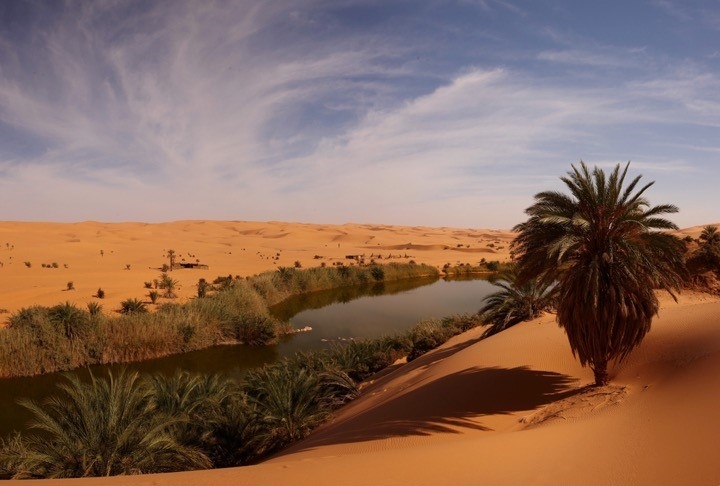
Savino di Lernia
Director, The Archaeological Mission in the Sahara
Director, The Archaeological Mission in the Kenyan Rift Valley
Sapienza University of Rome, Italy
Abstract
Climate changes are a serious threat to cultural and natural heritage. Although many contexts are today seriously endangered, recent studies highlight how “archaeology and cultural heritage threatened by anthropogenic climate change are not just victims but part of the solution” (Hambrecht & Rockman, 2017. American Antiquity). Long-term archaeological projects could provide evidence to better understand the nature of the relations between climatically driven environmental changes and social trajectories. Aim of this talk is to present a synthesis of the main Holocene climate and environmental variations from a privileged geographical context – the central Sahara, where the magnitude of these changes was huge –, with a special focus on the Tadrart Acacus and Messak region (SW Libya). Here, cultural and social trajectories go together with resilient mechanisms of adaptations. Archaeological evidence reveals that social strategies were pivotal in coping with environmental changes. Although it is certainly true that climate changes are in fact central elements in cultural trajectories, in the past as today, this is even truer for marginal ecosystems such as the changing landscapes of the Holocene central Sahara. However, the continuity of many cultural practices until historical times and even later shows how the Saharan tradition is indeed an extraordinary way of life that deserves specific attention.
Contact Sumiji Takahashi
Email sutakahashi@ioa.ucla.edu
Phone 310-825-4169
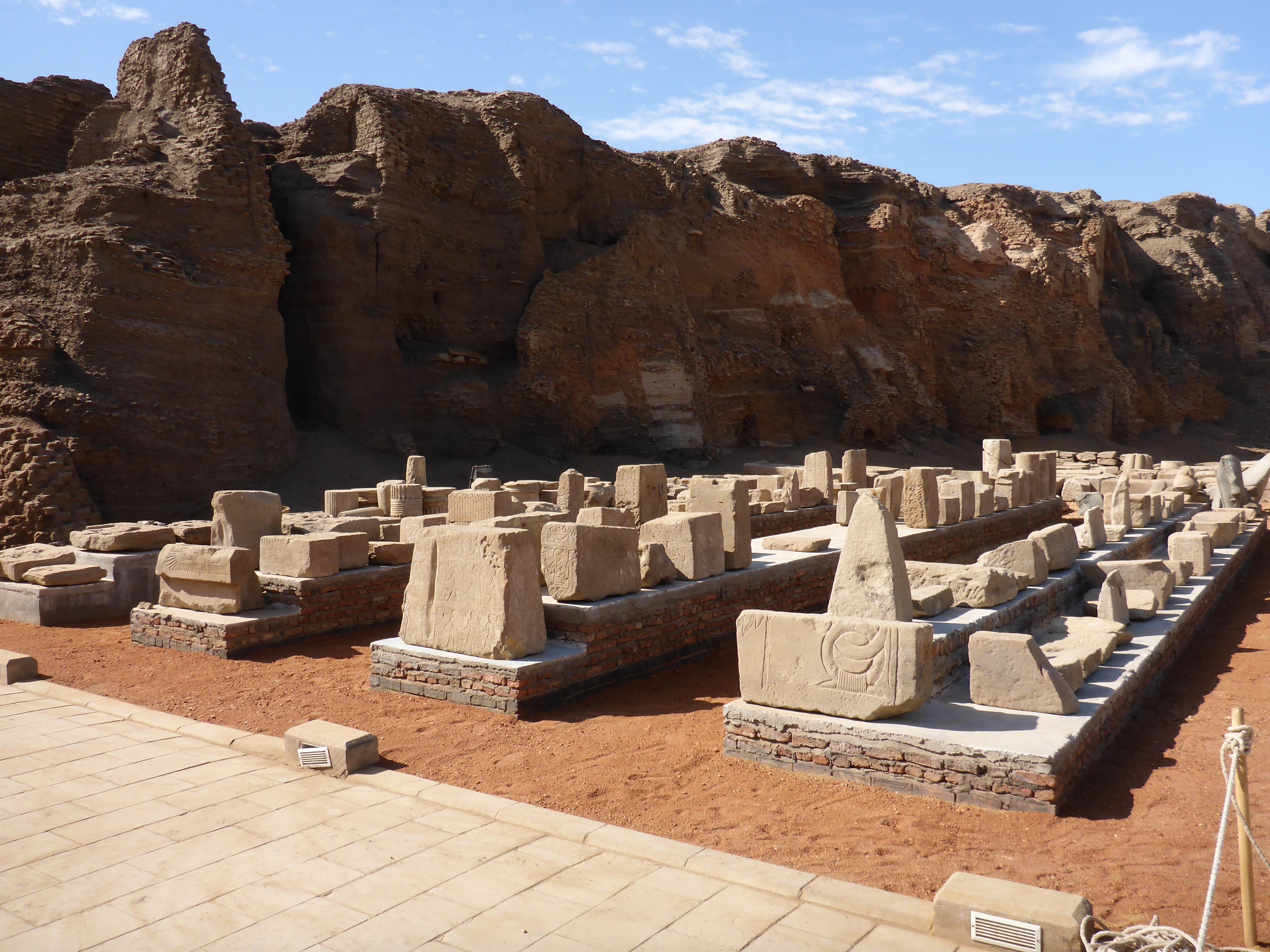
Jonathan Winnerman
Lecturer, UCLA Department of Near Eastern Languages and Cultures
ABSTRACT:
Begun in 2012, the goal of the Block Yard Project at Tell Edfu is to organize, conserve, and document the wealth of epigraphic material discovered in the settlement site to the west of the well-known Ptolemaic temple. Prior to the present study, many of the objects were simply abandoned at the base of the site, deemed unworthy for inclusion in a museum by early excavators. Yet, these objects reveal a great deal about Egyptian religious practices, especially in the community outside of the temple itself. This talk first discusses epigraphic methodology and the options available for the documentation of this or other, similar material. It next provides an overview of some of the most interesting results, focusing specifically on the remains of a distinctive structure of unknown design and purpose.
Contact Sumiji Takahashi
Email sutakahashi@ioa.ucla.edu
Phone 310-825-4169
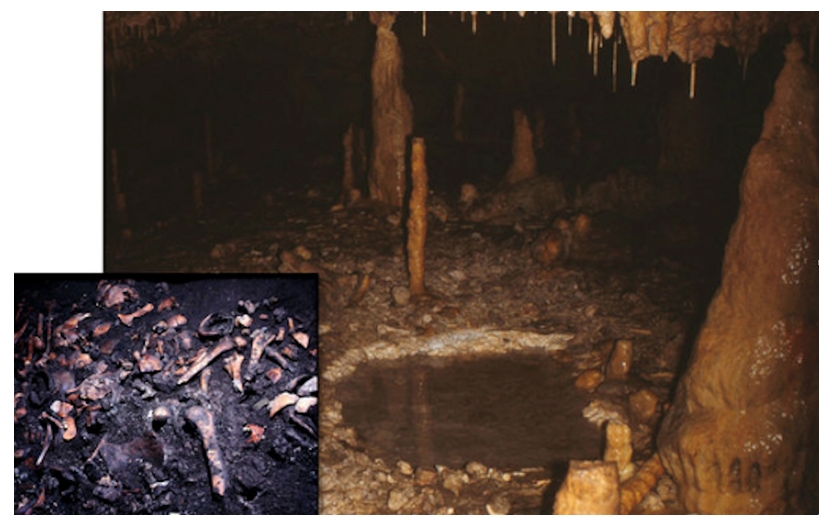 Early globalization? Isotopic evidence of food practices in Prehistoric Italy
Early globalization? Isotopic evidence of food practices in Prehistoric Italy
Mary Anne Tafuri
Department of Environmental Biology, Sapienza University of Rome
The cultural and social importance of food goes far beyond the mere necessity of nutrition, yet archaeologists have been slow to tackle issues of the sociality of food in prehistory. This is a great loss particularly as the economic transformations, which structured human diet took place in prehistory. One reason for lack of attention to this question has been limited methodologies for investigating not only what foods were produced but also exactly what foods people consumed.
The increasing application of biomolecular investigations of skeletal tissues offers an exceptionally valuable approach for directly assessing aspects of an individual’s life, including their diet, geographical origin as well as the climate they inhabited.
In the Central Mediterranean a number of important economic questions can be addressed through isotopic investigations: we can explore the balance between plant and animal sources of food in the diet of prehistoric people and how this change between the onset of the Neolithic (ca. 6000 BC) and the end of the Bronze Age (ca. 900 BC). We can assess the relative contribution of marine resources to diet the Central Mediterranean and, further, we can identify mode and tempo for the use of new foods.
This talk will present new isotopic data on a large set of sites from prehistoric Italy that span from the earliest phases of the Neolithic to the later Bronze Age. A pattern of great complexity emerges, showing profound differences between the northern and southern regions of the Peninsula, which can be associated with environmental aspects but mostly should be interpreted as different cultural practices across space and time.
Contact Sumiji Takahashi
Email sutakahashi@ioa.ucla.edu
Phone 310-825-4169
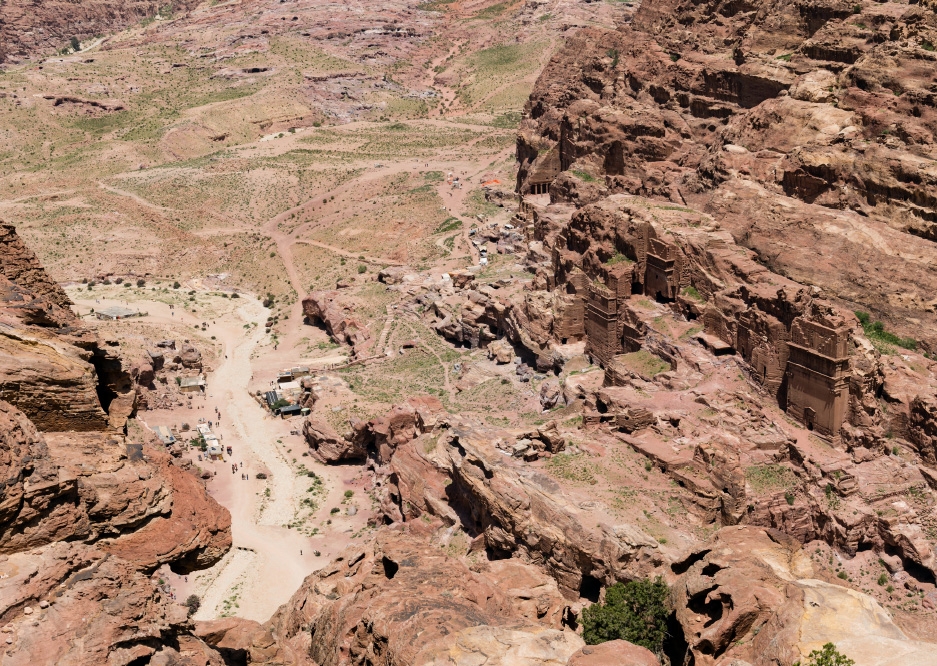 Felipe Rojas Silva
Felipe Rojas Silva
Assistant Professor of Archaeology and the Ancient World and Egyptology and Assyriology
Brown University
Contact
Email sutakahashi@ioa.ucla.edu
Phone 310-825-4169
- ‹ previous
- 29 of 50
- next ›



